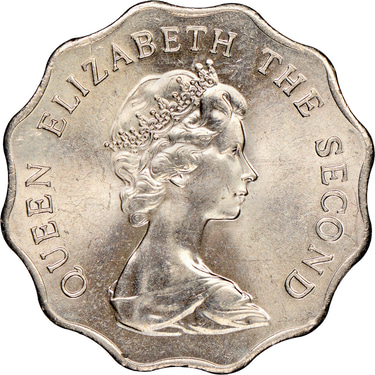Use Desktop for Better Experience
Listing in Hong Kong VS Mainland China
An IPO for a high-growth Chinese company isn’t just a financing event—it reshapes its capital access, valuation, shareholder base and global standing. Choosing between Hong Kong’s market-driven international hub and Mainland China’s deep, policy-aligned markets isn’t about which is “better,” but about matching that decision to the company’s industry, investor mix, corporate structure and long-term ambitions.
FINANCIAL
Ryan Cheng
8/4/20254 min read
For any high-growth company, the decision of where to go public is one of the most consequential milestones in its lifecycle. It’s a choice that impacts valuation, liquidity, shareholder structure, and long-term strategy. For Chinese enterprises, this decision often boils down to a pivotal choice between two world-class capital markets: the international hub of Hong Kong (HKEX) and the deep, policy-driven markets of Mainland China (A-shares).
While geographically close, these two financial centers offer fundamentally different philosophies, processes, and opportunities. The optimal choice is not about which market is "better," but which is the "right fit" for a company's specific industry, investor base, and strategic ambition.
The Hong Kong Story: Flexibility, International Capital, and Innovation
The Hong Kong Stock Exchange has long cemented its reputation as Asia's premier international financial center. Its core appeal lies in a value-seeking and market-driven approach. The listing process is generally faster and more streamlined than in the Mainland, with a focus on a company's investment highlights, growth story, and commercial viability.
Hong Kong is the ideal arena for companies with a global ambition, a strong investor story to tell, and a need for the structural flexibility to accommodate modern corporate structures.
Gateway for International Capital
Hong Kong's free flow of capital makes it the natural choice for companies backed by US dollar funds, offering them a straightforward and efficient exit path.


Structural Flexibility
The HKEX has been a pioneer in adapting its rules to attract new-economy companies. It readily accepts structures like VIEs (Variable Interest Entities) and Weighted Voting Rights (WVR), which are crucial for many tech giants.
Recognizing the unique capital needs of innovative industries, the HKEX introduced specific listing chapters. Chapter 18A allows pre-revenue biotech companies to list based on their R&D pipeline and potential, while the newer Chapter 18C caters to pre-profit "hard-tech" companies in fields like AI and semiconductors.
Targeted Support for Emerging Sectors




The Mainland China Narrative: A Multi-Layered Market Aligned with National Strategy
In contrast, the A-share market is fundamentally regulation-oriented and deeply integrated with China's national economic strategy. The due diligence process is more intensive, with a heavy emphasis on historical financial compliance and operational verification. However, this rigor is matched by immense domestic liquidity and strong policy support for targeted industries.
Listing in Mainland China is best suited for companies whose growth is aligned with national policy, who have a strong compliance track record, and who seek to tap into the vast pool of domestic capital.
STAR Market (科创板)
Hosted on the Shanghai Stock Exchange, the STAR Market is China's answer to the Nasdaq. It is explicitly designed for "hard technology" enterprises that align with national strategic goals, focusing on breakthroughs in core technologies.


ChiNext (创业板)
Part of the Shenzhen Stock Exchange, ChiNext primarily serves growth-oriented and innovative enterprises. It has a broader scope than the STAR Market, supporting not only tech startups but also the technological transformation of traditional industries.
The newest of the three, the BSE is positioned to serve enterprises that are “earlier, smaller, and newer.” It acts as a dedicated financing platform for innovative small and medium-sized enterprises (SMEs), particularly those designated as "Specialized, Refined, Unique, and Innovative" (专精特新), which are seen as the backbone of China's future industrial strength.
Beijing Stock Exchange (北交所)




A Framework for Decision-Making
Ultimately, the path to an IPO is a strategic journey, not just a financial transaction. The choice between Hong Kong and Mainland China is a choice between two distinct ecosystems. One offers global reach and flexibility; the other offers domestic depth and policy tailwinds. The successful company is the one that understands its own identity and chooses the arena where its story will resonate most powerfully.




Mainland China (A-Shares)
Company Profile: Best for "hard tech," strategic industries, and innovative SMEs with solid compliance records.
Investor Base: Primarily serves RMB funds and domestic institutional and retail investors.
Listing Philosophy - Regulation-oriented: Focus is on historical compliance, financial verification, and alignment with policy.
Process & Timeline: More intensive and longer, with deep dives into financial and operational history.
Valuation & Liquidity: Access to enormous domestic liquidity, which can lead to high valuations, especially for policy-favored sectors.
Hong Kong (HKEX)
Company Profile: Ideal for pre-revenue biotech, companies with WVR/VIE structures, and those with a strong international narrative.
Investor Base: The preferred choice for US dollar-denominated funds (PE/VC) seeking a convenient exit.
Listing Philosophy - Value-seeking: Focus is on the investment story, growth potential, and pricing.
Process & Timeline: Generally faster (9-12 months) with a more streamlined due diligence process.
Valuation & Liquidity: Access to global investor pools and valuation benchmarks.


